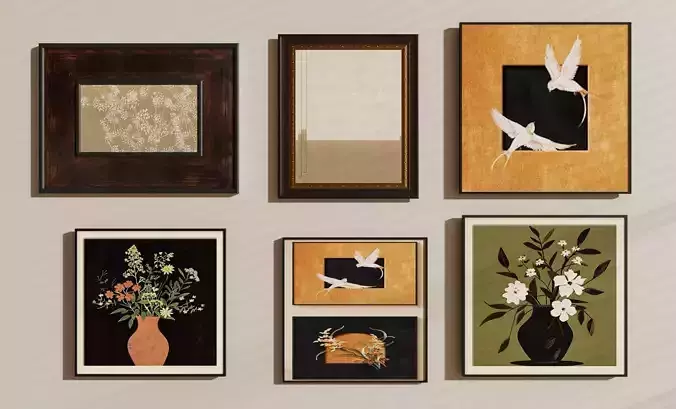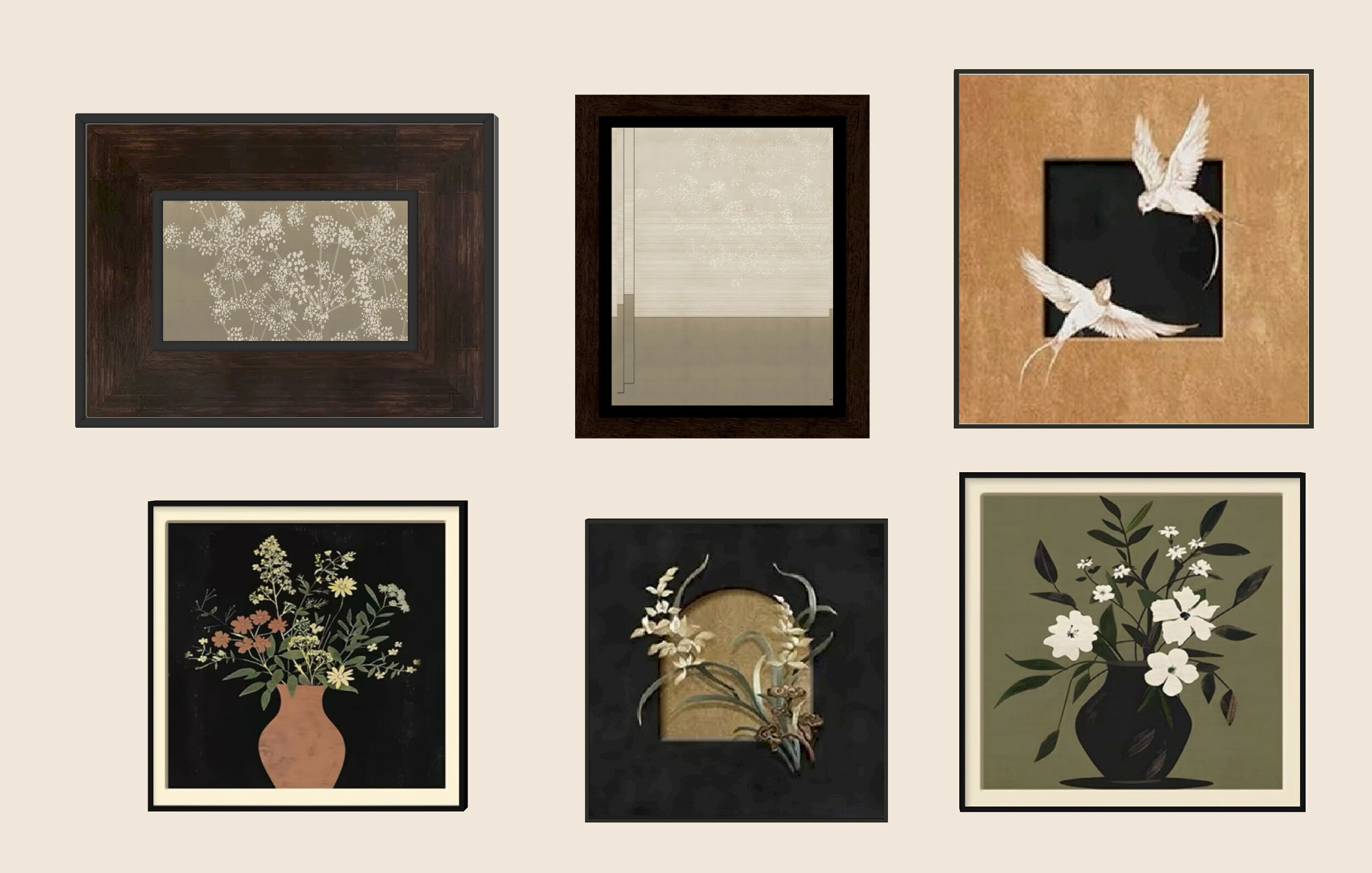
Middle Ages ji hanging painting three-dimensional 3D model
The hanging painting takes the beauty of incompleteness as its core concept, and three groups of black, white and gray are installed on the green wall to form a visual poetics. The main work is based on weathered wooden boards, and the surface is covered with hand-crumpled rice paper. The depressions are embedded with oxidized wrought iron pipes. The rust spotted black forms a texture dialogue with the rice white of rice paper, and the hanging hemp threads on the top sway gently with the airflow. The auxiliary painting on the right side uses double acrylic plates lined with charcoal sketches. The broken circles and broken lines in the picture are laser cut. The plates are filled with volcanic stone particles. The gray shadows present an embossed texture under the light. The device on the left is more like a deconstructed antique: several irregular metal sheets are suspended in the old wooden frame. The surface is oxidized at high temperature to form a gradual change of silver gray and deep black. The edges of some metal sheets retain burrs during forging, which are pasted inside the frame. Half of the dried lotus leaf forms a material that echoes. The whole group of works is run through in three colors: matte black, volcanic ash, and rice paper white. Removable pottery pieces connected by magnets are hidden in the white space, allowing the incomplete philosophy in Ji Ji aesthetics to flow naturally in the three-dimensional composition, each Scratch and shadow have become a concrete expression of time.


